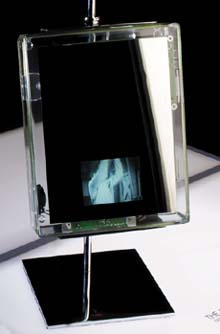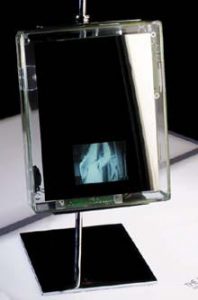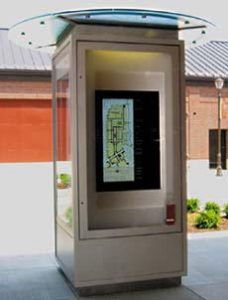Conversation in a GlobalShop booth between your correspondent and an exhibitor who provides video content for electronic display systems (EDS):
“What if video is too expensive for your client?” I asked. “What if the client wanted less-ambitious content, such as rotating static slides, basic animations or Flash presentations?”
Exhibitor's reply: “We'd try and sell them on video.”
You should now hear a penalty horn.
And this tells me one reason why EDS isn't being implemented faster. The suspicion among retailers is that many EDS suppliers don't understand how to market this “disruptive” technology or even how to create a system that solves real-life problems. They tend to sell what they have, as opposed to what the customer really needs.
Beyond Systems Integration
Most suppliers who package and sell EDS technology are systems integrators. They create dynamic messaging displays by sourcing and connecting hardware components that are essentially commodities.
Don't get the wrong idea: I'm not minimizing those skills. The selection of the right display media, distribution infrastructure, players and control software is a critical process and requires real expertise. However, when the whole thing is built, it usually looks like a flat screen playing a video, and one looks much like another. It's a TV in a store.
Thus, we saw the Digital Store section of GlobalShop dominated by a dozen or so systems integrators with dramatic but generic presentations. For a retailer or any other potential user of dynamic displays, it's difficult to distinguish among the offerings. But as always, there is a handful of developers who have figured out how to plug in something extra into an EDS product.
These EDS providers “get it.” This in no way implies they are the only ones who do, only that I noted something extra that set them apart from the pack.
Impart Inc.: Having early staked out turf creating custom EDS hardware environments, this Seattle-based company went a step further when it rolled out “Video Reflections” at GlobalShop. The new line of self-contained integrated mirror displays is designed to draw shoppers to cosmetics and jewelry counters. The 11 models are based on whimsical visual concepts (Towering Inferno, Cereal Box and The Eyes Have It) and incorporate a 4-inch color display screen and speaker into the mirror body.
Ready to set up and plug into the nearest AC outlet, these units can play video loops up to 15 minutes long. No phone line or Internet connection is required. Impart suggests that this sort of merchandising scenario is ideal for generating ad dollars for retailers by “broadcasting” product manufacturers' promotional content on the mirror face, a quite specific application of “narrow-casting.”
Nanonation: This Lincoln, Neb.-based systems integrator has specialized in developing its own proprietary software platforms for interactive EDS applications. Among the feathers in its hat thus far is an interactive Yahoo! salon in Marshall Field's flagship store in Chicago. The area deploys a combination of flat screens and Internet-enabled kiosks that allow customers to sample cutting-edge technology products from Yahoo! partners.
At GlobalShop, Nanonation rolled out “Revolve,” an interactive system that allows shoppers to participate in “dynamic refashioning.” In a typical configuration, the Revolve system includes a large-format HD plasma display screen and a smaller interactive screen controlled by the customer.
Nanonation's database-driven software is able to display composite images as defined by the customer (for example, a model wearing various combinations of fashions or colors).
AlivePromo: At GlobalShop, this Minneapolis-based company chose to exhibit in the P-O-P Marketplace. This is consistent with the company's origins in the p-o-p collateral-fulfillment business. According to ceo Sam Rogers, EDS is essentially digital fulfillment for electronic content and therefore a natural extension of the original business. Accordingly, AlivePromo is one of the few companies to develop standard, standalone EDS units that look and feel like displays, signs and store fixtures – because that's what they are. The latest incarnation, the “Lure,” is a floor merchandising unit that incorporates a flat display into a product merchandising fixture.
You may soon hear of AlivePromo's kiosk project at the new Zona Rosa mall in Kansas City, Mo. Among the display units is a digital directory capable of informing strollers about promotions or events via pop-ups. The pop-up graphics can be programmed to appear under specified conditions or at pre-programmed time intervals.
This is the kind of creative juice required to jumpstart EDS technology into a communications medium that works for both retailers and consumers.
Sean O'Leary, VM+SD technology editor, is a Chicago-based writer specializing in the visual communications market. Contact him at VM+SD@stmediagroup.com.


 Photo Gallery1 week ago
Photo Gallery1 week ago
 Headlines4 days ago
Headlines4 days ago
 Headlines1 week ago
Headlines1 week ago
 Headlines2 weeks ago
Headlines2 weeks ago
 Headlines1 week ago
Headlines1 week ago
 Designer Dozen1 week ago
Designer Dozen1 week ago
 Headlines1 week ago
Headlines1 week ago
 Headlines1 week ago
Headlines1 week ago










